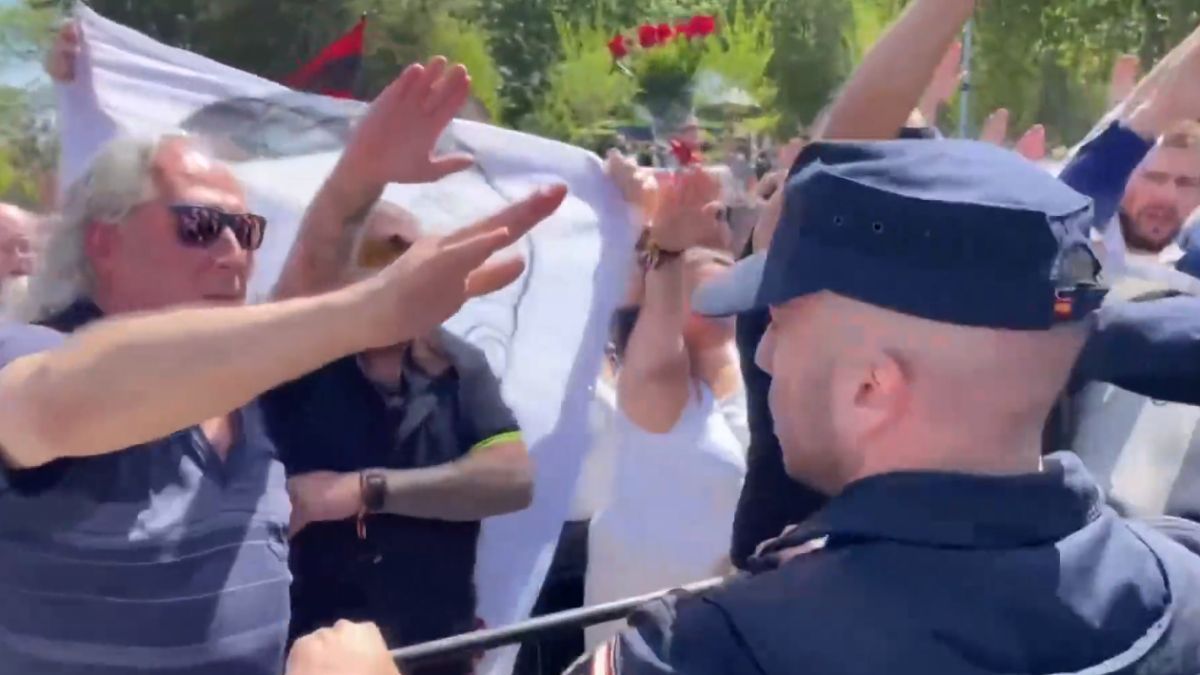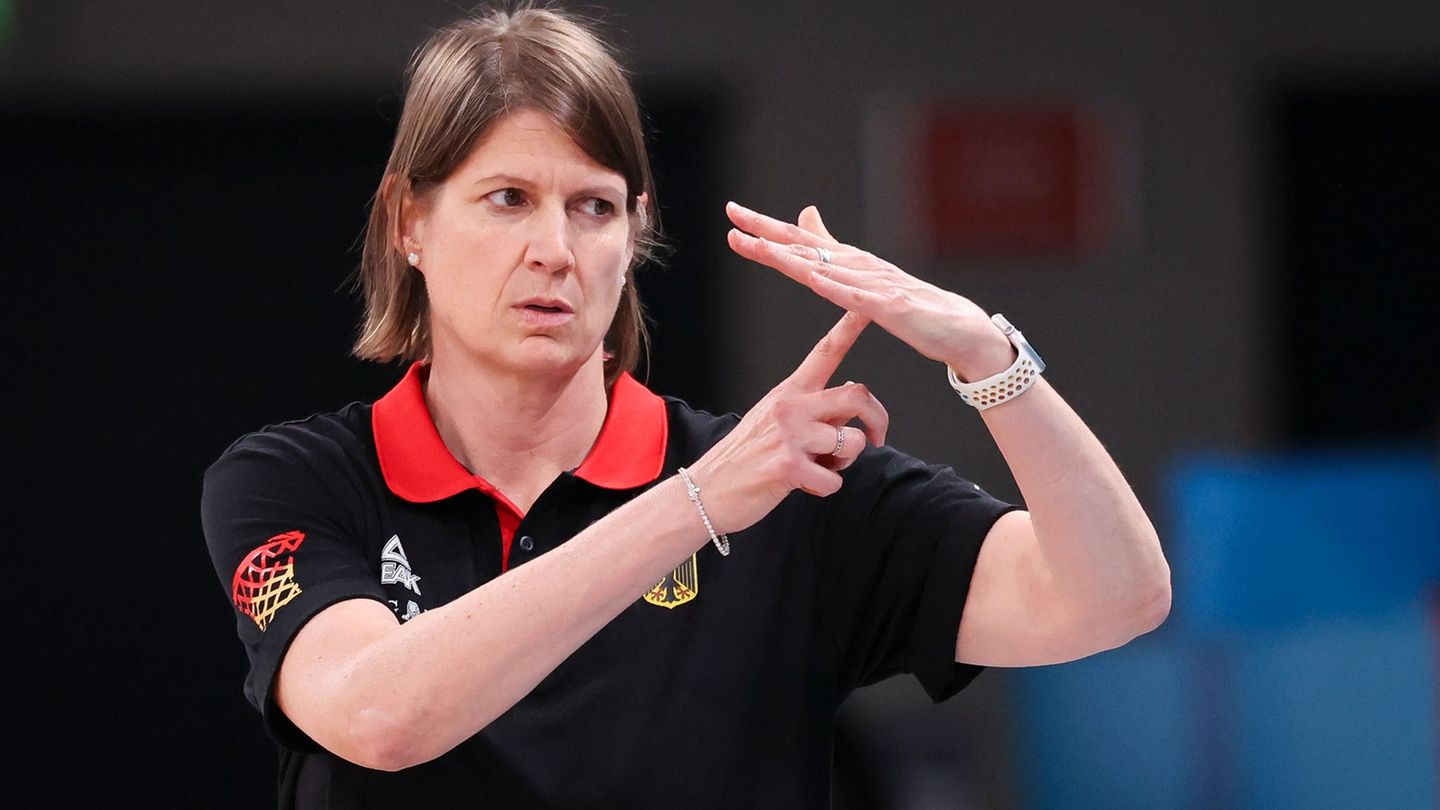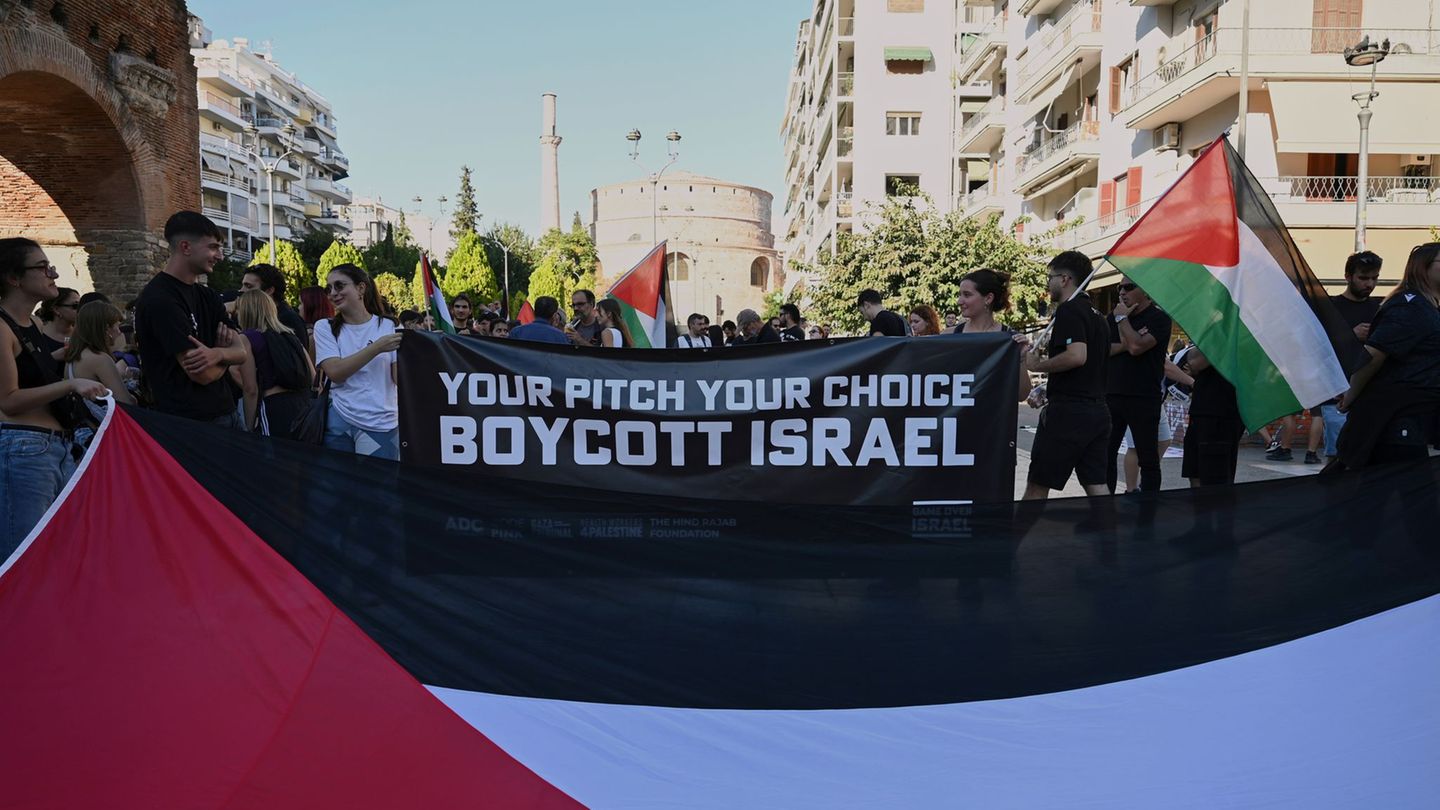The remains of José Antonio Primo de Rivera, the founder of the Spanish fascist Falange party, until now buried prominently in Franco’s mausoleum, were moved to a civilian cemetery in Madrid by order of the left-wing government, not without protests from his supporters.
In this way, the remains of Rivera’s cousin They follow the same path as those of the dictator Francisco Franco, extracted from exValley of the fallen (current Valle de Cuelgamuros) in October 2019 and transferred to a Madrid cemetery.
“Finally our institutions are faithful to the memory of our country and not to its forgetfulness,” Yolanda Díaz congratulatedvice president of the government of Pedro Sánchez, describing the mausoleum of the Valley of the Fallen, built to his greatest glory by Francisco Franco, as a “historical anomaly”.
Some 200 Falangists had clashes with the police at the gates of the San Isidro cemetery, where they awaited the arrival of the remains of Primo de Rivera, executed by Republicans at the beginning of the Civil War, on November 20, 1936.
falangists spain cousin of rivera.mp4
Falangist followers of José Antonio Primo de Rivera and the Nazi salute.
Relatives of Primo de Rivera rest in the San Isidro cemetery, as well as the Cuban dictator Fulgencio Batista, a Spanish survivor of the sinking of the “Titánic” or the singer Concha Piquer.
The exhumation of José Antonio began with the removal of the 3.5-ton granite slab that covered the grave.
Two funeral vehicles entered the monumental complex, not far from Madrid, around 06:30 GMT, according to images broadcast on public television, and arrived in San Isidro five hours later escorted by security forces.
Who was José Antonio Primo de Rivera?
Son of the dictator Miguel Primo de Rivera, who ruled Spain from 1923 to 1930, the founder of the Phalanx He was shot by the Republicans in November 1936, at the beginning of a conflict that started with a military rebellion, among whose leaders was Frank, against the democratic government.
Of fascist inspiration, the Falange party was one of the pillars of the Franco regimetogether with the Catholic Church and the army.
This exhumation, which takes place three and a half years after Franco’s, derives from the entry into force in October of the Law called “Democratic Memory” which, among others, aims to convert the old mausoleum into a place of memory about this dark period.
The Primo de Rivera family, which negotiated the conditions of the exhumation with the government, chose the date because it corresponds to the 120th anniversary of the birth of the founder of the Falange.
jose antonio primo de rivera.jpg
Compensation for victims of the Civil War and the Franco dictatorship
After his arrival at the presidency of the government in 2018, the socialist Pedro Sánchez made compensation for the victims of the Civil War and the Franco dictatorship (1939-1975) a priority.
Franco and Primo de Rivera were buried on either side of the basilica’s altar.
Similarly, Sánchez made the search for the disappeared Republicans from the Civil War, many in common graves, a “State responsibility.”
Commissioned by Franco in 1940 to celebrate his Catholic “glorious crusade” against the “Godless” Republicans, the Valley of the Fallen is located about 50 kilometers from Madrid. Renamed Valle de Cuelgamuros by the government, its construction by thousands of political prisoners took almost 20 years.
Dominated by a 150 meter high cross, this basilica is visible for tens of kilometers around.
In the name of a so-called “national reconciliation”, Franco ordered the transfer of the bodies of more than 30,000 victims of the Civil War, Francoists but also Republicans, taken from cemeteries and mass graves without informing their families.
Exhume Republican victims
The remains of the Republican victims claimed by their families must also be exhumed, but the process was delayed due to a court battle.
In November, the Spanish authorities also had the remains of a Francoist military leader, General Queipo de Llano, exhumed from the Macarena Basilica in Seville. This general is considered responsible for thousands of executions in southern Spain that occurred after the military uprising of 1936, including that of the poet Federico García Lorca.
The memory of the Civil War and the dictatorship continues to divide Spain, where the wounds of the past have never fully closed and the right accuses the left of reopening them.
Source: Ambito




